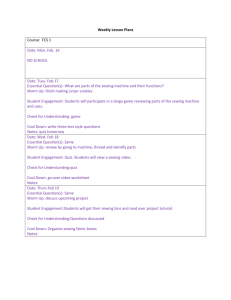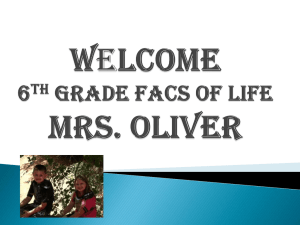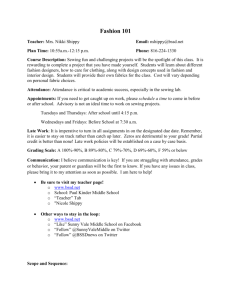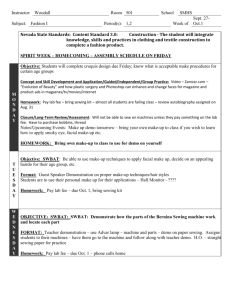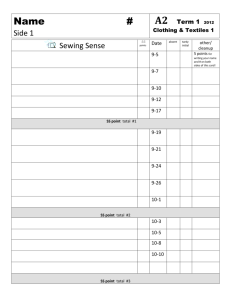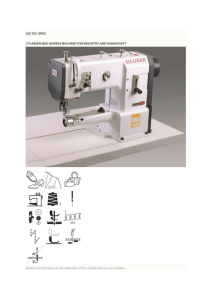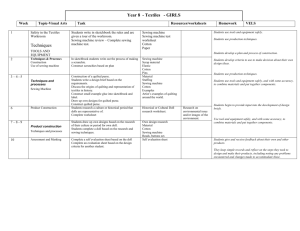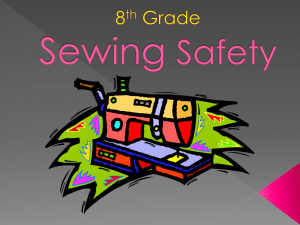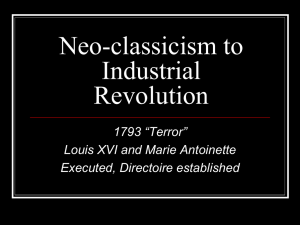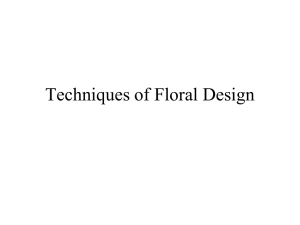Presentation - Weber State University
advertisement
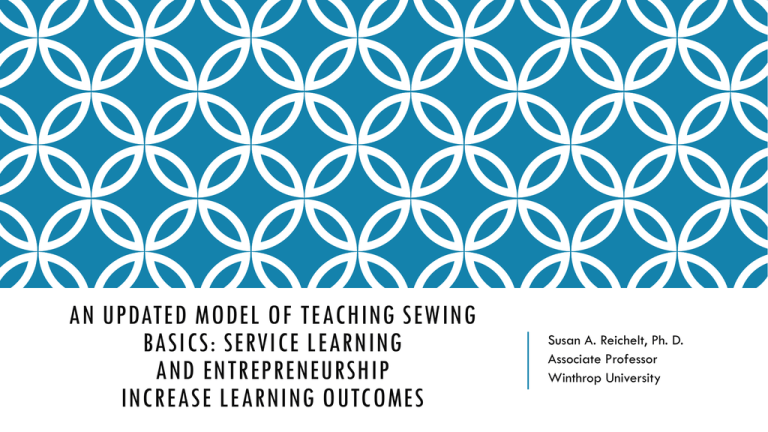
AN UPDATED MODEL OF TEACHING SEWING BASICS: SERVICE LEARNING AND ENTREPRENEURSHIP INCREASE LEARNING OUTCOMES Susan A. Reichelt, Ph. D. Associate Professor Winthrop University OBJECTIVES Participants will: Recognize the multifaceted benefits of sewing Compare a traditional model of an apparel construction course with an updated model of a sewing course Examine product models and resources useful in implementing an updated sewing course Identify student outcomes, including enhanced problem solving, decision making, spatial intelligence, and business skills, gained through completion of an updated sewing course WHAT ARE YOUR PERCEPTIONS OF THE VALUE OF TEACHING SEWING SKILLS AS PART OF A FAMILY SCIENCES CURRICULUM? Poll Everywhere Live HISTORICAL STIGMA AGAINST CLOTHING AND TEXTILES (C&T) PROFESSIONALS “A woman who does not know how to sew is as deficient in her education as a man who cannot write.” -----E. W. R Farrar, 1837 (As cited in Osaki, 1988) DUAL ASSOCIATION OF SEWING SKILL “The fact sewing represented both a part of the traditional female role in the home and one of the few acceptable ways to earn a living, led to ambiguity on the part of both educators and students almost from the beginning.” -----Parsons, 2000 VOCATIONAL CURRICULUM BIAS “Industrial and trade training were primarily directed toward working class children, especially those described as ‘motor minded’ or not bookish.” -------Powers, 1992 NATIONAL STANDARDS AND BODY OF KNOWLEDGE Lack of research base related to the value of clothing and textiles as part of the required FCS curriculum Ranked on the bottom three in importance of sixteen areas of study in the FCS National Standards PREJUDICE BELIES POPULARITY, PROBLEM SOLVING SKILL, HEALTH AND ECONOMIC IMPACT OF SEWING POPULARITY 2002 sales of sewing machines began a dramatic increase, continuing throughout the recession Quilting as an art has increased in popularity in recent years, showing greater involvement and economic impact Werhan, 2004 PROBLEM SOLVING SKILL Smagorinsky study identified outcomes in decision-making, communication in problem solving, a willingness to try a variety of methods until problems are solved, and spatial intelligence. HEALTH BENEFITS Emotional Benefits Stress reduction Physical Benefits Lower heart rates and blood pressure Sharp, CA 2009 ECONOMIC IMPACT Sewing related businesses are on the rise nationwide Sewing related products and service companies increased profitability during the recent recession PERSONAL EXPERIENCE IN THE C&T ARENA A TRADITIONAL UNIVERSITY CURRICULUM Emphasis on garment construction and isolated skill development Garment requirements Sample notebook REVAMPING THE REQUIRED APPAREL CONSTRUCTION COURSE Based on NC high school model Focus on problem solving, entrepreneurship and service learning Covered button intro project Think of a unique or creative way this button can be utilized. INCLUSION OF ENTREPRENEURSHIP AND SERVICE LEARNING Student ideas for entrepreneurship Product development Presentation development Class consensus Mass production of product SPRING 2012 FINISHED PRODUCTS SERVICE PROJECTS REFERENCES Osaki, A. B. (1988, Winter). A “truly feminine employment”: Sewing and the early nineteenth century woman. Winterthur Portfolio. 225-241. Parsons, J. L. (2000). “For homemaking and a trade”: Paradox and problems in the earlydevelopment of systemized sewing instruction. 2000 Proceedings of the International Textiles & Apparel Association. Monument, CO. Powers, J. B. (1992). The ‘girl question’ in education: Vocational education for young women in the progressive era. Washington, D.C.: Falmer Press Reichelt, S. A. (2002). Family and consumer sciences national curriculum standards: Implementation plans for reform. Journal of Family and Consumer Sciences Education, 20, 2. Sharp, C. (2009). Clinical study reveals the stress-reducing benefits of sewing. Home Sewing Association. Retrieved from https://www.flickr.com/groups/745332@N22/discuss/72157613029568612/ Smagorinsky, P. (November 1996). Multiple intelligences, multiple means of composing: Analternative way of thinking about learning. NASSP Bulletin. 80(583), 11-17. Werhan, C., Buckland, S., & Vollmer, J. (2004). Finding a place for tradition in the curriculum: A case study for sewing in the Ohio family and consumer sciences classroom. Journal of Family and Consumer Sciences Education, 22, 43-57. QUESTIONS/COMMENTS
